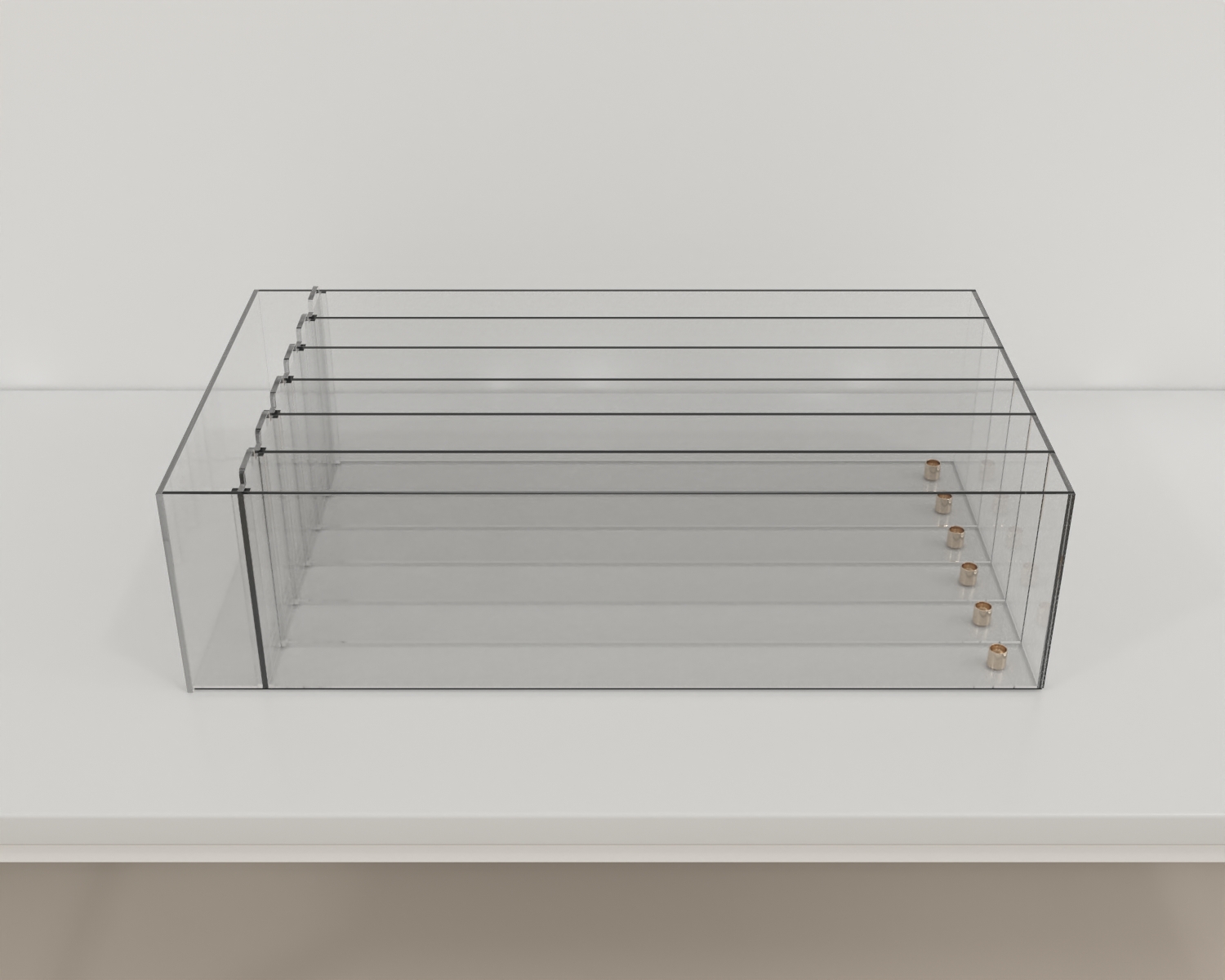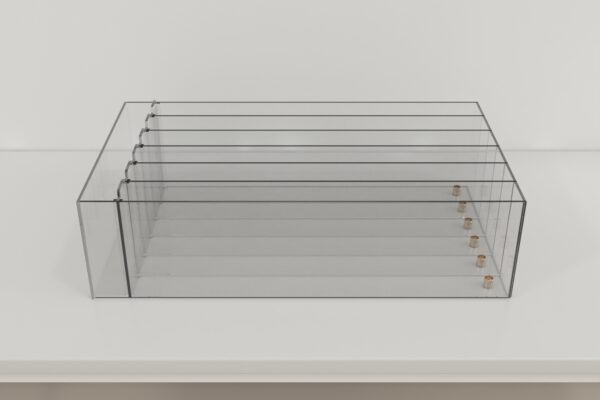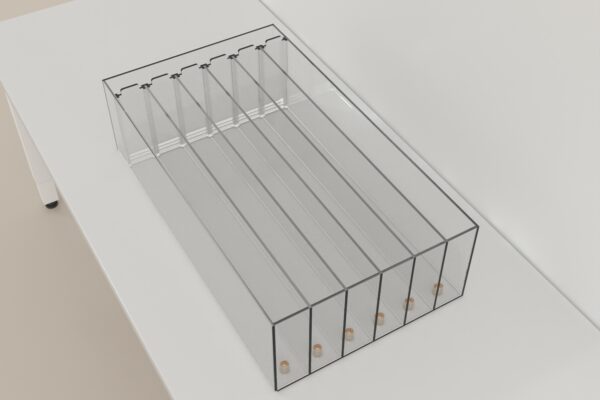The Six Arm Maze is used to study spatial learning and memory in rodents.
The maze consists of transparent, geometrically similar, but visually distinct multiple U-shaped sequential arms connected to a linear track.
Subjects are tested for their ability to memorize a sequential path in the apparatus. Unlike other apparatus, the Six Arm Maze tasks use food rewards as motivation for exploration, which reduces the effects of stress on the performance.
Mazeengineers offer the Six Arm Maze.




